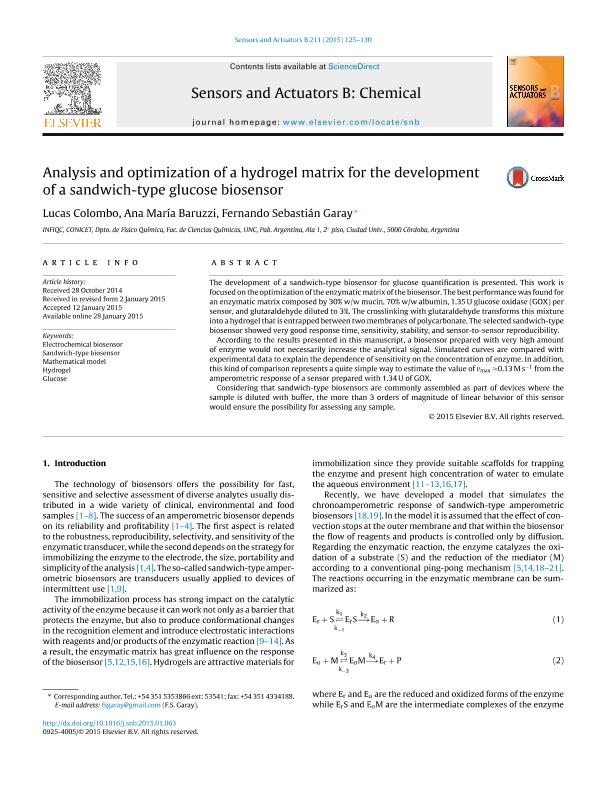Artículo
Analysis and optimization of a hydrogel matrix for the development of a sandwich-type glucose biosensor
Fecha de publicación:
01/2015
Editorial:
Elsevier Science Sa
Revista:
Sensors and Actuators B: Chemical
ISSN:
0925-4005
Idioma:
Inglés
Tipo de recurso:
Artículo publicado
Clasificación temática:
Resumen
The development of a sandwich-type biosensor for glucose quantification is presented. This work is focused on the optimization of the enzymatic matrix of the biosensor. The best performance was found for an enzymatic matrix composed by 30% w/w mucin, 70% w/w albumin, 1.35 U glucose oxidase (GOX) per sensor, and glutaraldehyde diluted to 3%. The crosslinking with glutaraldehyde transforms this mixture into a hydrogel that is entrapped between two membranes of polycarbonate. The selected sandwich-type biosensor showed very good response time, sensitivity, stability, and sensor-to-sensor reproducibility. According to the results presented in this manuscript, a biosensor prepared with very high amount of enzyme would not necessarily increase the analytical signal. Simulated curves are compared with experimental data to explain the dependence of sensitivity on the concentration of enzyme. In addition, this kind of comparison represents a quite simple way to estimate the value of vmax≈0.13 M s-1 from the amperometric response of a sensor prepared with 1.34 U of GOX. Considering that sandwich-type biosensors are commonly assembled as part of devices where the sample is diluted with buffer, the more than 3 orders of magnitude of linear behavior of this sensor would ensure the possibility for assessing any sample.
Archivos asociados
Licencia
Identificadores
Colecciones
Articulos(INFIQC)
Articulos de INST.DE INVESTIGACIONES EN FISICO- QUIMICA DE CORDOBA
Articulos de INST.DE INVESTIGACIONES EN FISICO- QUIMICA DE CORDOBA
Citación
Colombo, Lucas; Baruzzi, Ana Maria; Garay, Fernando Sebastian; Analysis and optimization of a hydrogel matrix for the development of a sandwich-type glucose biosensor; Elsevier Science Sa; Sensors and Actuators B: Chemical; 211; 1-2015; 125-130
Compartir
Altmétricas




